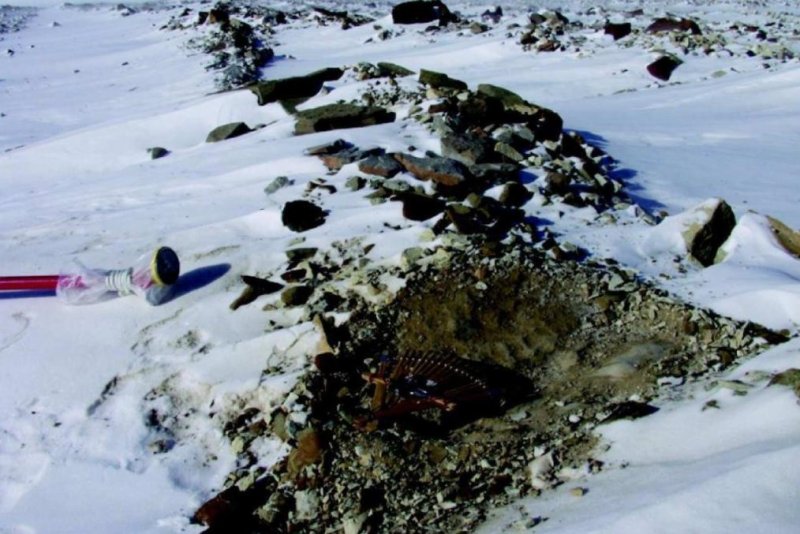A sampling site in Antarctica where scientists have found tiny glass beads produced by a meteor strike in Australasia some 800,000 years ago. Photo by Imperial College London
April 5 (UPI) -- After years of searching, scientists are confident they're finally closing in on the location of the crater left by a meteorite that struck Australasia 800,000 years ago.
When the 12-mile-wide meteor struck Earth, debris was exploded in the sky and deposited across the region. The fragments have not been hard to come by, and yet, scientists have failed to locate the crater.
"It's a mystery. If a relatively young, 20 kilometer-wide crater can escape detection, how do we find impact craters that are many millions of years old?" Matthew Genge, a researcher at Imperial College London, said in a news release. "And what hope do we have of predicting future collisions if older craters can just disappear?"
From Australia to Vietnam, scientists have recovered what are known as tektites, glassy beads measuring just a centimeter in diameter. Researchers believe tektites were formed by the molten spray produced by the collision.
Now, Genge and his colleagues have found even smaller signatures of the impact, microtektites, glassy beads measuring only a few micrometers across -- the width of a human hair.
"We found tiny yellow glass spherules within glacial debris in Antarctica, and our analysis of potassium and sodium suggests that these were thrown the farthest from the impact crater," Genge said.
Researchers believe the tiny beads will help them finally find the missing crater.
Smaller, hotter droplets tend to travel farther from the collision site. Debris farther away from the collision site also tend to feature smaller amounts of potassium and sodium.
By following the smaller fragments to the larger fragments, researchers believe they can make their way to the collision site and the missing crater.
"Our microtektites appear to have been hotter, which means they are furthest from the initial impact," Genge. "Following the breadcrumb trail of debris from hotter to cooler should lead us to the crater."
The researchers say they now have good evidence that the crater occurred 800,000 years ago, and hope the microtektites lead them to it.
If researchers can indeed track down the missing crater, their techniques -- detailed this week in the journal Geochimica et Cosmochimica Acta -- could help find other impact sites, too.
"Tiny impact debris are scattered over most of the globe, and are probably offering clues that we haven't tapped into yet," Genge said.















